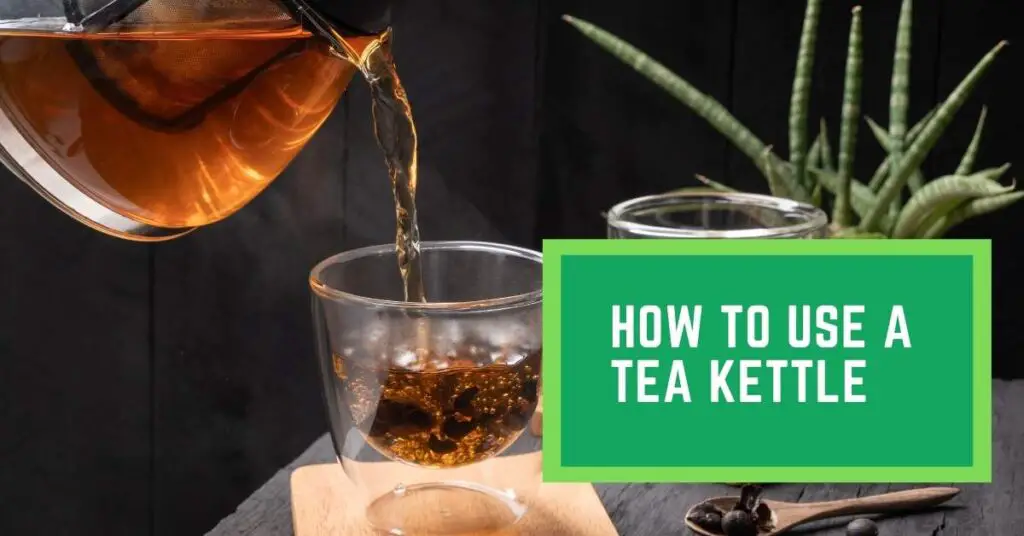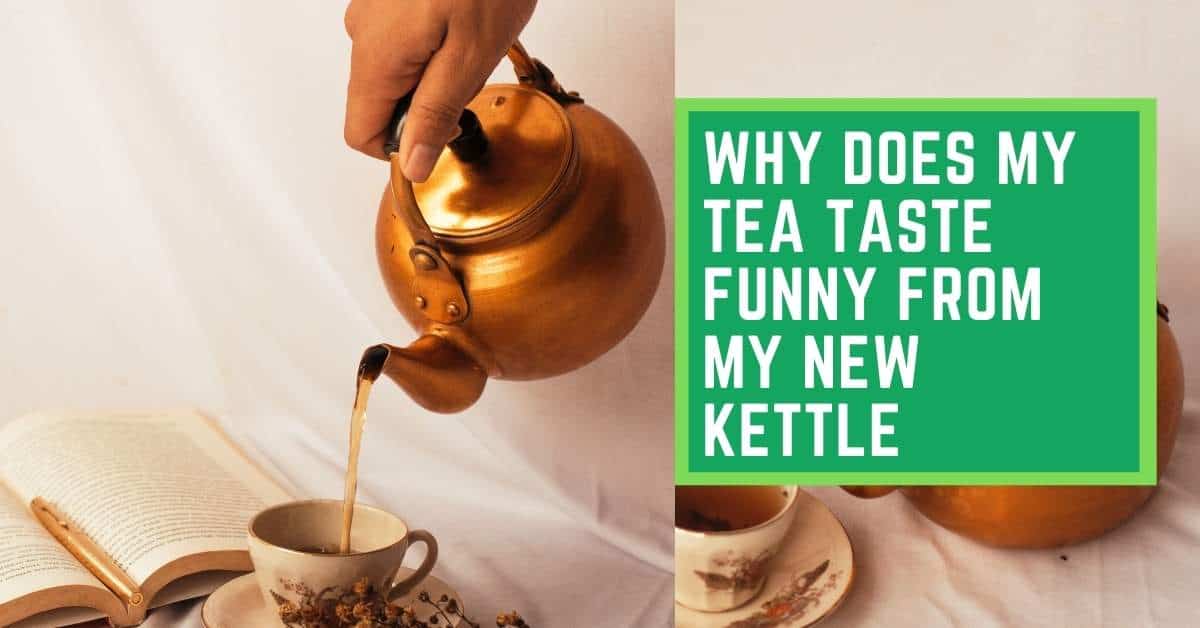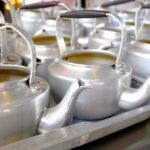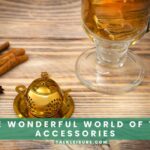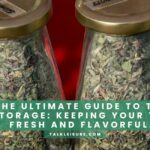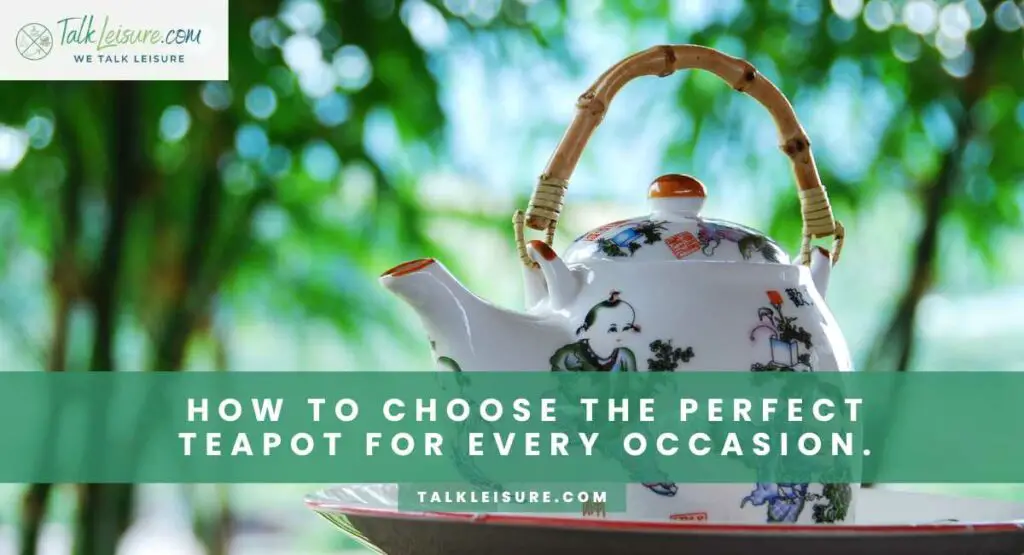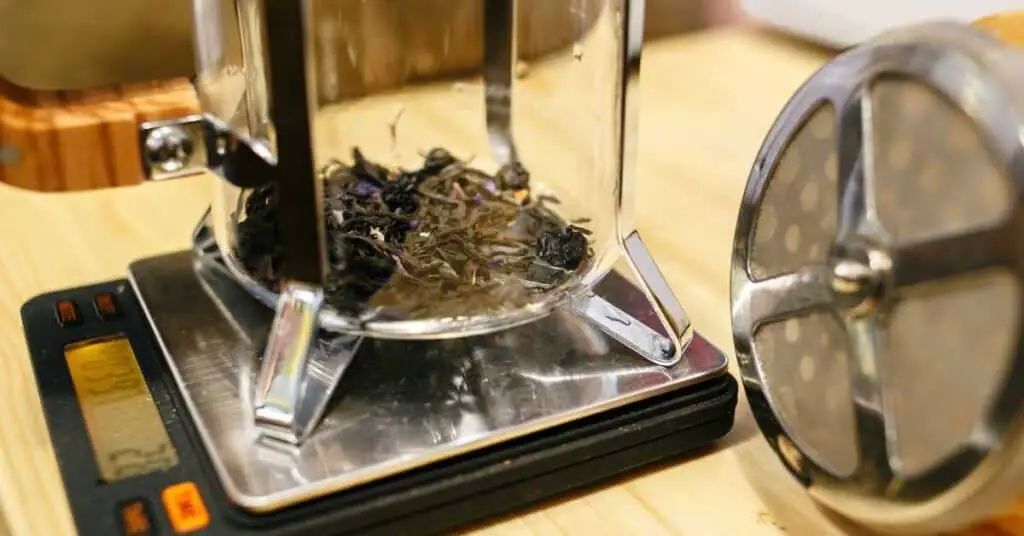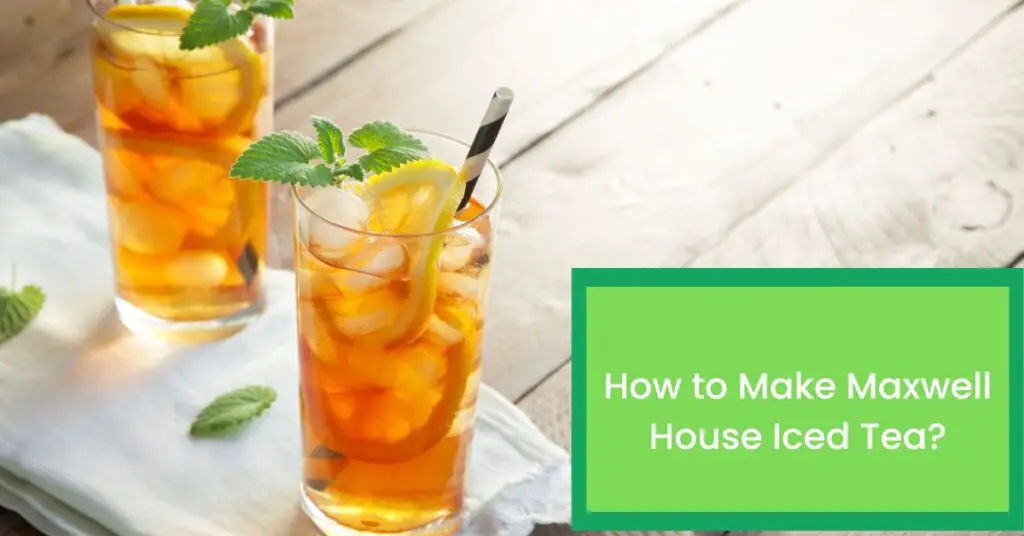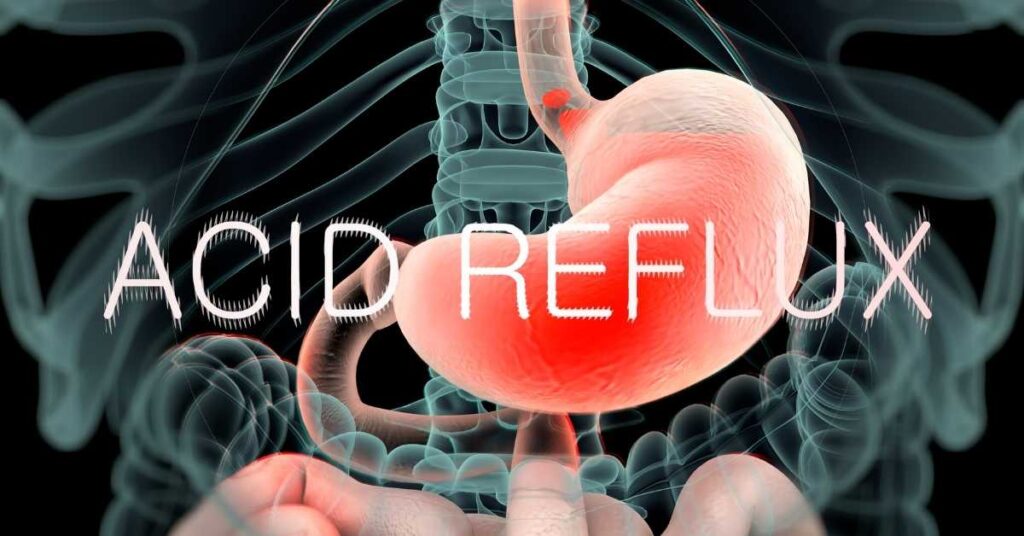Tea is a delicious drink enjoyed by people all over the world. There are many different ways to make tea, but one of the most popular methods is to use a tea kettle. There are many different types of tea kettles available on the market, from electric kettles to stovetop kettles. Each type has its own set of instructions for use. This article will provide you with basic instructions on how to use a stovetop tea kettle.
What to follow?
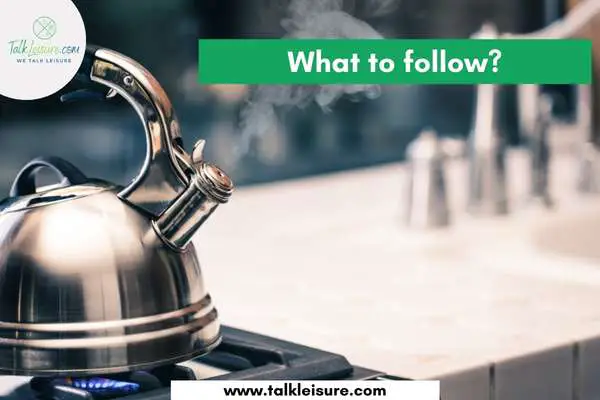
Clean the Kettle: The first thing you should do before using your tea kettle is to clean it. Some kettles come with a cleaning brush, so use this to scrub off any loose debris. Be sure to clean the spout and the inside of the kettle as well.
Fill with Water: Place the kettle on your stove and fill it with water. The amount of water you use will depend on the type of tea you are making. For black tea, use 1 cup of water for every teabag. For green or oolong tea, use 2 cups of water.
Put on Heat: Turn on your stove and set the heat to medium-high; if it’s electric, put the required heat using controls or just plug it to power. The water will start to boil within a few minutes. When the water reaches a boil, turn off the stove and remove the kettle.
Steep the Tea: Place the tea bag or tea leaves into the kettle and let the boiling water work with tea leaves. Allow the tea to steep for the required duration, then remove the tea bag or tea leaves.
| White Tea | 4–5 minutes | 175°F (79°C) |
| Green Tea | 3–4 minutes | 175°F (79°C) |
| Oolong Tea | 3–5 minutes | 195°F (91°C) |
| Black Tea | 3–4 minutes | 195°F (91°C) |
| Dried Herbal Tea (ex: hibiscus, lemon balm) | Max. Up to 15 minutes | 212°F (100°C) |
| Fresh Herbal Tea (ex: ginger, turmeric) | 5–15 minutes (tender herbs)15–30 minutes (chopped or grated roots) | 212°F (100°C) |
Pour to Cups: Pour the tea into cups and enjoy! If you are making a lot of tea, you can pour it into a pitcher or teapot. Also, be sure that you pour all the tea you made on the kettle and leave the kettle to cool down.
Clean the Kettle: After you are done using the tea kettle, be sure to clean it again. When cleaning, makes sure to remove the spout and scrub it with a brush. Clean the inside and outside both. Once it is clean, let it dry off.
Store it Properly: Once the tea kettle is clean and dry, store it in a place where it will not get wet. Make sure the tea kettle is completely dry before putting it away. This will help keep the tea kettle in good condition and allow it to last longer.
Types of Kettles
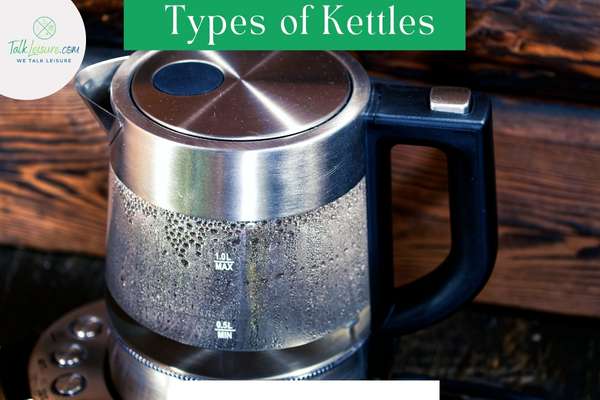
Tea kettles are a convenient way to make tea. Mainly there are electric kettles and stovetop kettles. Each one has its own unique set of features and benefits. Also, they come in a variety of shapes and sizes. Now we will look at these main two types of kettles available in the market.
Stovetop: The stovetop kettle is a classic design that has been around for many years. It is made of stainless steel and has a black plastic handle, while some come with wooden handles as well. The stovetop kettle is easy to use and makes great tea. All you have to do is fill it with water, place it on the stove, and turn on the heat. The stovetop kettle heats up quickly and reaches a boiling point within minutes. Once the water boils, you can remove the kettle from the stove and let it cool down before pouring it into cups. A stovetop kettle is a great option if you are looking for an affordable tea kettle that is easy to use.
Electric: The electric kettle is a newer design that has quickly become popular. It is made of plastic wood and has a stainless steel finish. The electric kettle is easy to use and comes with a variety of features, such as variable temperature controls and automatic shut-off. You can place the electric kettle only on its electric stove. The electric kettle heats up quickly and reaches a boiling point within minutes. Once the water boils, you can remove the kettle from the stove and let it cool down before pouring it into cups. An electric kettle is a great option if you are looking for an easy-to-use kettle with a variety of features.
Choose the Right Kettle
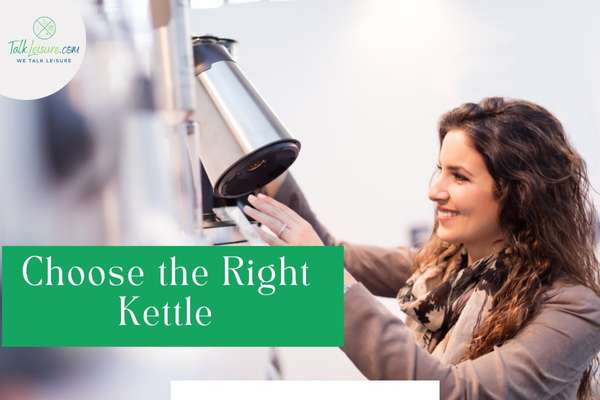
When choosing a tea kettle, there are a few things you need to consider. The first thing is the type of kettle. Do you want a stovetop kettle or an electric kettle? The next thing to consider is the size of the kettle. Do you want a small or large kettle? And finally, do you want any special features?
If you are unsure about which type of tea kettle to choose, start by thinking about what type of stove you have. If you have an electric stove, then an electric kettle is a good choice. If you have a gas stove, then a stovetop kettle is a good choice.
Once you have decided on the type of kettle, think about the size. Do you want a small or large kettle? Kettles come in a variety of sizes, so choose the one that is best for you.
Finally, think about any special features you might want. Some kettles have variable temperature controls, which allow you to adjust the temperature to your liking. Other kettles have an automatic shut-off, which is a safety feature that turns the kettle off automatically when it is done boiling. Choose the features that are best for you and your needs.
Recommended Products:
– Stovetop
01. Le Creuset Enamel On Steel Demi Tea Kettle

Le Creuset Enamel On Steel Demi Tea Kettle is the perfect kettle for any tea lover. The durable carbon steel heats water rapidly, and the fixed single-tone whistle alerts when the water has reached a rolling boil. The chip-resistant, non-reactive, resistant to stains, and easy to clean kettle makes it a perfect gift for any tea lover or for yourself.
02. Premier Housewares Whistling Tea Kettle

The Premier Housewares Whistling Tea Kettle is a classically designed kettle with a contemporary white finish. The minimalistic design makes it the perfect addition to any kitchen, and the whistling function ensures that your tea is always brewed perfectly.
– Electric
01. Cuisinart CPK-17 PerfecTemp

The perfect kettle for tea lovers! The Cuisinart CPK-17 PerfecTemp Cordless Programmable Kettle offers six preset heat settings, so you can always steep your tea at the perfect temperature. With 1500 watts of power, this kettle heats the water quickly and has a 360-degree swivel base for easy pouring.
02. Gooseneck Electric Kettle with Temperature Control & Presets

Don’t let your mornings be a mess ever again! This electric kettle has temperature control and presets so that you can make the perfect cup of coffee or tea without any fuss. The ergonomic plastic handle makes it easy to grip, and the stainless steel construction is both beautiful and durable. Plus, it’s made entirely from food-grade stainless steel and BPA-free plastic, ensuring that your beverage will taste great every time.
Advantages & Disadvantages
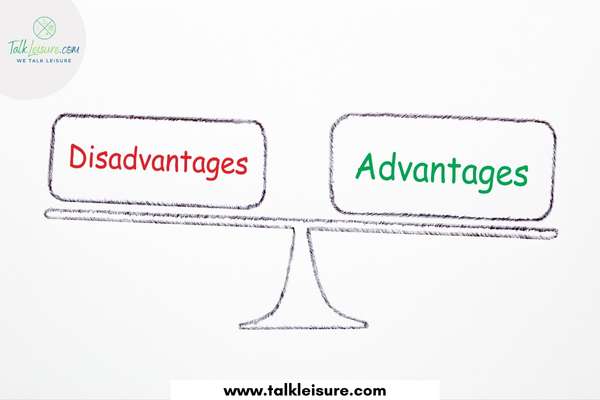
– Stovetop
Advantages: There are a few reasons why stovetop tea kettles are better than electric kettles. First, stovetop tea kettles don’t have the annoying habit of turning off after a certain amount of time, regardless of whether or not the water is actually boiled. Second, they heat the water more evenly, so there’s less risk of getting a lukewarm cup of tea instead of a piping hot one. And finally, stovetop tea kettles just look more elegant and traditional on your kitchen stove.
Disadvantages: There are a few disadvantages of stovetop tea kettles over electric kettles. For one, stovetop tea kettles take longer to heat up water than electric kettles do. Secondly, since stovetop tea kettles use heat from the stove to boil water, it’s important to be careful not to let the water boil dry, which can damage the kettle. Finally, some people find that the whistle of a stovetop tea kettle is too loud.
– Electric
Advantages: There are a few advantages to using an electric kettle over a stovetop tea kettle. First, electric kettles tend to be faster than stovetop kettles. Second, they’re more efficient because they don’t heat up the surrounding area, which can waste energy. Third, they’re easier to use because you don’t have to worry about adjusting the heat or stirring the water. Finally, many electric kettles have multiple temperature settings so that you can customize your brewing experience.
Disadvantages: Some could say electric kettles typically have a capacity of 1-2 litres, while stovetop kettles often have a capacity of 1 litre or less. This means that it takes longer to heat the same amount of water in an electric kettle. Another disadvantage of electric kettles is that they can be more expensive than stovetop kettles. However, this depends on the make and model of each type of kettle. And finally, some people find that the plastic or silicone parts on electric kettles can leach chemicals into the boiling water, which can then be ingested.
Your Exterior Safety
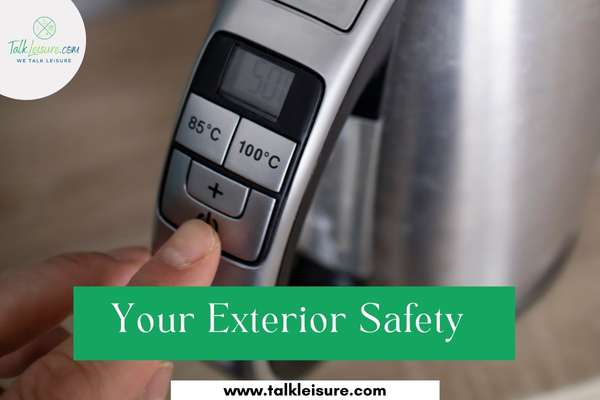
The two main personal safety concerns when using a stovetop or electric kettle are burns and scalding.
To avoid burns, always keep your hands and arms away from the stovetop when cooking. If you’re using a pot or pan on the stove, be sure to use a sturdy oven mitt to protect your hands. Also, never leave anything cooking on the stove unattended.
To avoid scalding, always wait for the water to come to a full boil before removing it from the heat source. And always use caution when pouring hot water, especially if there are children or pets around. Be sure to pour the water away from you and towards the back of the sink so that you don’t accidentally splash yourself with hot Liquid.
Your Interior Health

Aluminium Kettles: There are a few potential dangers that come with using aluminium kettles. One is that aluminium can leach into the water, and when you drink it, that aluminium can be harmful to your health. Additionally, the aluminium kettle may not be as effective at heating up the water like other materials like stainless steel or glass. This means that you might not be getting the most out of your tea or coffee if you’re using an aluminium kettle.
Copper Kettles: Copper kettles are bad for your health because copper is a metal that can dissolve in water, and when it does, it forms a poisonous compound called copper sulphate. If you drink water that’s boiled in a copper kettle, you could end up with a dangerous level of copper in your body. So to be on the safe side, it’s best not to use a copper kettle to boil water.
Cast Iron Kettles: There’s a lot of debate on this topic, but most experts seem to agree that cast iron kettles release small amounts of harmful toxins into your water as it boils. These toxins can include heavy metals like lead and arsenic, which can be very dangerous to your health over time. For that reason, I would recommend avoiding cast iron kettles if at all possible and opting for a safer alternative like stainless steel or aluminium.
Ceramic Kettles: There is some concern that using a ceramic kettle may not be the healthiest option, as the material may leach toxins into the water. The ions released from the ceramic material can potentially increase levels of lead and other heavy metals in the water, which could then be ingested. There are also concerns that the materials used in some ceramic kettles may release compounds that can damage DNA. While more research is needed to determine whether this is a real risk or not, it’s probably best to avoid using a ceramic kettle if you’re concerned about your health.
Care Your Tea Kettle
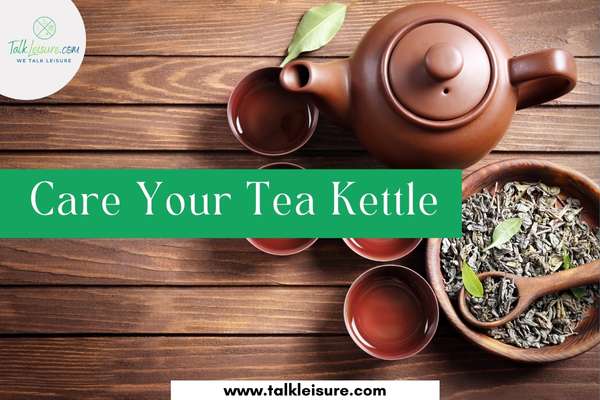
There are a few things you can do to care for your stovetop or electric kettle and ensure that it lasts for years. Here are a few tips:
– Always use a trivet or heat diffuser when boiling water on the stovetop, as this will prevent the pot from sitting directly on the burner and from becoming scratched or damaged.
– If you have an electric kettle, be sure to unplug it after each use. This will help to prolong the life of your kettle.
– If you have a gas stovetop, make sure the flames never lick up the sides of the kettle. This can cause the metal to warp and the kettle to eventually burst.
– If you have an electric kettle, be sure not to let it boil dry. Not only will this damage the kettle, but it could also start a fire.
– To clean your stovetop or electric kettle, use a soft cloth and freshwater with a light shampoo. Be sure to rinse off any leftover suds before drying with another cloth. Do not use any harsh chemicals or abrasive pads, as these could damage the finish on your kettle.
Other Uses of Tea Kettle
There are many other uses of tea kettles. One is that they can be used to heat up water quickly on the stovetop. This is a great way to speed up the process of making tea or coffee or for cooking pasta or vegetables.
Another use for tea kettles is as a water pitcher. If you need to boil a lot of water, it can be more efficient to use a tea kettle rather than a pot. This is because kettles have bigger openings and can hold more water than pots do.
Also, a tea kettle can be used to heat up water or milk for coffee, hot chocolate, or soup. Moreover, a tea kettle can be used as a pot for boiling eggs or potatoes. And finally, a tea kettle can be used as a small pot to melt butter or chocolate.
Repair Your Kettle
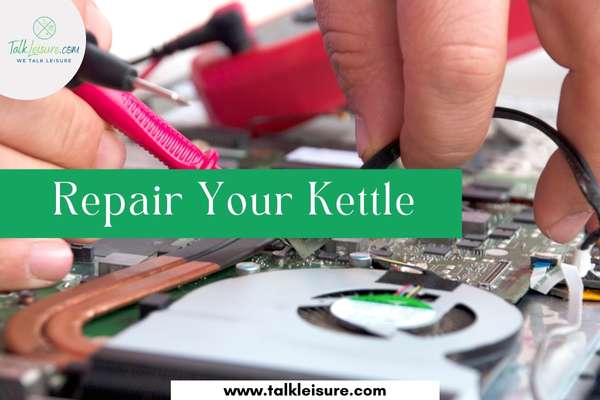
If the kettle is very old and is beyond repair, then it may not be worth it. However, if the kettle is relatively new and only has a few minor damages, then it may be worth it to repair it.
The cost of repairing a kettle will vary depending on the extent of the damage and the type of repair that needs to be done. In most cases, it will be cheaper to purchase a new kettle than to have it repaired simply. However, if the damage is not too severe, then repairing the kettle may be more economical than buying a new one.
What can go wrong with your kettle?
– Stovetop: There are a few things that can go wrong with your stovetop tea kettle. The most common problem is that the coils get clogged with mineral deposits, which can cause the kettle to heat unevenly and eventually lead to a breakdown. Another issue that can occur is that the pot starts to leak, either because of a faulty seal or because the metal begins to corrode over time.
Finally, if the pot isn’t cleaned regularly, it can build up scale and gunk that will make it difficult to use and might even pose a fire hazard. So if you want your stovetop tea kettle to last as long as possible, be sure to clean it regularly and descale it every few months.
– Electric: The most common issue with electric kettles is that the internal wiring can become damaged, which can cause the kettle to short-circuit. If this happens, it could potentially start a fire, so it’s important to be aware of the signs of a faulty kettle and to unplug it immediately if you notice any problems.
Other potential issues include the pot or cord cracking or breaking, water leakage, and the heating element burning out. All of these issues could potentially result in injury, so if you experience any problems with your electric tea kettle, it’s best to discontinue use and contact the manufacturer for a replacement.
Visual Explanations
i. Top 05 Glass Kettles:
Ii. Top 05 Stainless Steel Kettles:
Related Matters
01. Do you put tea bags in a kettle?
You can put tea bags in a kettle, but it’s not the best way to make tea. The water will be hotter on the bottom and cooler on the top, which means that the tea will not steep evenly.
It’s better to use a teapot or to place the tea directly in the pot. Fill the pot with hot water and let it sit for a minute or two before adding the tea. This will bring the water to the right temperature for brewing. Steep for 3-5 minutes, depending on how strong you like your tea.
02. What’s the difference between a tea kettle and a teapot?
A teapot is a vessel in which tea is brewed. A tea kettle is a vessel that boils water to be used in tea brewing or for other purposes.
Some people might say that a teapot must have a spout and a lid, while others might say that any pot in which tea can be brewed can also be called a “teapot”. In general, though, usage of the terms tends to follow these definitions.
03. Is it OK to leave boiled water in a kettle?
Yes, it’s generally safe to leave boiled water in a kettle. However, if you’re not going to use the water right away, it’s best to pour it into a thermal carafe or other container designed to keep hot beverages warm. This is because leaving boiled water in a kettle can cause the water to become stagnant, and this can lead to the growth of bacteria or mould. Stagnant water can also cause the formation of scale or lime deposits on the inside of the kettle. So if you do leave boiled water in your kettle, be sure to give it a good rinse before using it again.
04. What happens if you boil a kettle without water?
If you boil a kettle without water, the kettle will overheat and might damage the heating element. The water boils because it turns into vapour, which is created when the hydrogen atoms in the water molecules are split into ions by the heat. These vaporized water molecules rise up through the spout of the kettle, just like steam does.
If there’s no water in the kettle to absorb this heat, then the vaporized molecules will continue to rise until they hit something solid (like the top of the kettle) and turn back into Liquid. This Liquid will then trickle back down and hit the heating element, which is still very hot from boiling previously with no water. This Liquid will cause short-circuiting in your kettle and might potentially damage the heating element.
05. What’s the best way to descale a kettle?
There are a few ways to descale a kettle. One is to fill the kettle with 1/3 white vinegar and 2/3 water and bring it to a boil. Let it cool, then dump out the solution and rinse the kettle well. Another way is to use baking soda. Fill the kettle with 1-2 cups of hot water, add 1/4 cup of baking soda, and let it sit for an hour or so. Then dump out the solution and rinse the kettle well. A third way is to use lemon juice. Fill the kettle with 1-2 cups of hot water, add lemon juice until the kettle is full, let it sit for an hour or so, then dump out the solution and rinse the kettle well.
No matter which method you use, it’s important to rinse the kettle well after descaling. Baking soda can leave a residue behind, and vinegar and lemon juice can both be acidic. This residue can damage the finish of your kettle over time.

